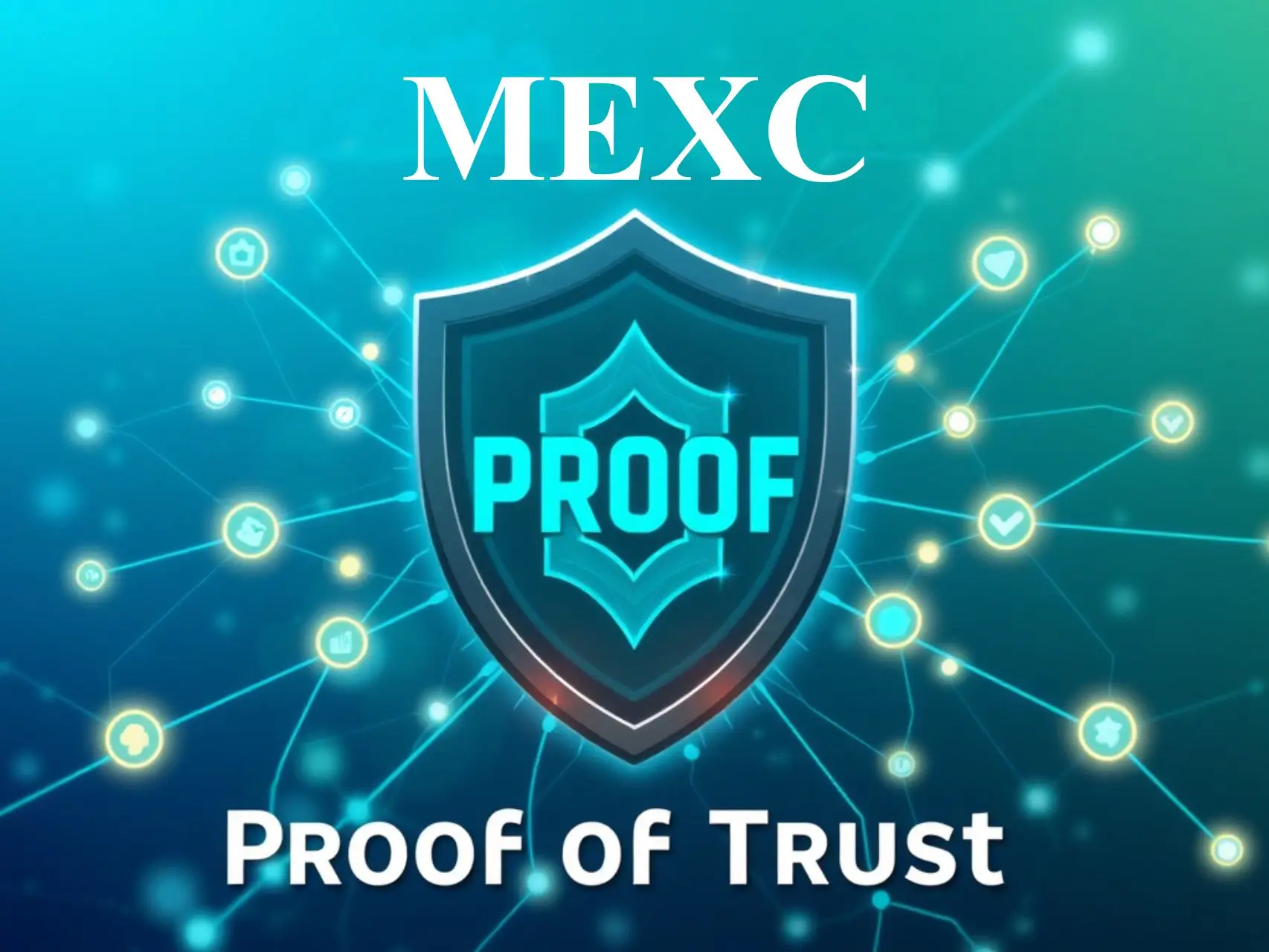Trust isn’t just a buzzword in crypto anymore—it’s survival. And in the aftermath of some of the most devastating exchange collapses in recent memory, centralized platforms are under intense pressure to do more than talk about security. They need to prove it. That’s where MEXC steps in, rolling out a sweeping initiative dubbed “Proof of Trust”—a global, tech-driven campaign built around operational integrity, verifiable transparency, and user-first protections.
This isn’t just another checklist item. MEXC’s “Proof of Trust” isn’t marketing fluff—it’s a roadmap for how exchanges should operate in the post-FTX era. It’s a full-blown transformation of the platform’s role in the crypto ecosystem. No longer just a place to trade, MEXC now positions itself as a guardian of user assets and a champion of transparent financial infrastructure.
The initiative builds on MEXC’s prior foundation—such as over-collateralized reserves, routine audits, and lightning-fast support—and pushes it into new territory. Think public-facing reserve disclosures, open wallet tracking, real-time solvency reports, and a $100 million safety fund. That’s not a promise. It’s a provable, on-chain commitment.
Why Trust Has Become the Most Valuable Currency in Crypto
Burned by the Past: Lessons from Exchange Collapses
Crypto history is riddled with red flags. The downfall of high-profile platforms—some of which were once thought to be “too big to fail”—has shattered investor confidence across the board. When users lose billions in locked funds, the entire industry feels the tremors. These failures weren’t just technical—many were rooted in poor governance, opaque operations, and zero accountability.
It’s no surprise then that users have grown skeptical. Promises of security aren’t enough anymore. People want receipts. They want to see where their assets are, how they’re managed, and whether their exchange has the reserves it claims.
MEXC’s “Proof of Trust” directly addresses this psychological shift. By focusing on public, on-chain verification rather than blind faith, the company is aligning itself with a new kind of crypto user—one that’s informed, cautious, and unwilling to gamble on empty assurances.
Global Regulation Is Tightening—and Fast
On top of user pressure, centralized exchanges are also feeling the heat from regulators. From the SEC in the United States to MiCA in the European Union, governments are introducing stricter compliance measures. Transparency isn’t optional anymore—it’s a legal necessity.
This is where MEXC is playing smart. Instead of waiting to be regulated, the exchange is getting ahead of the curve by building internal frameworks that reflect external expectations. The “Proof of Trust” campaign isn’t just user-focused—it’s regulator-friendly, too. That’s a rare and strategic alignment.
What ‘Proof of Trust’ Actually Means
A 360° Framework for Exchange Integrity
While most platforms might introduce a new feature and call it progress, MEXC has gone for a full-system overhaul. “Proof of Trust” isn’t just a banner campaign—it’s a deeply integrated infrastructure upgrade designed to build trust at every level of user interaction.
This means users won’t just read about security—they’ll experience it. Whether it’s through live asset tracking, robust insurance coverage, or bi-monthly solvency reports, MEXC is making trust measurable. It’s not about convincing users. It’s about enabling them to verify everything for themselves.
Redefining the Role of a Centralized Exchange
Historically, centralized exchanges served one core function: enable crypto trading. But in today’s environment, that’s no longer enough. Users want protection from fraud, immediate recovery options, and clear-cut protocols for when things go wrong.
MEXC has accepted that challenge head-on. With “Proof of Trust,” it’s moving from exchange to infrastructure provider—a platform not just for buying and selling tokens, but for securing digital assets in a provable way.
Building Transparency Into the Platform’s DNA
Security Tools You Can See, Track, and Verify
One of the campaign’s biggest differentiators is its public verifiability. MEXC publishes the wallet addresses associated with its major security initiatives, including the $100 million Guardian Fund. Users don’t have to rely on trust—they can actually view the fund’s holdings on-chain in real time.
This model is more than transparent—it’s transformative. Every initiative under the “Proof of Trust” banner is engineered to be publicly verifiable. That includes:
Over-collateralized reserves to prevent insolvency.
Wallet disclosures with open access to fund movement.
Security reporting on a strict quarterly schedule.
It’s not about trust being asked for—it’s about trust being earned.
The Rise of the Zero-Trust Philosophy
MEXC is embracing a “don’t trust, verify” approach. That’s a big departure from legacy systems where internal data was shielded from the public. In today’s fast-moving, high-risk crypto environment, transparency must be systemic.
Users are encouraged to monitor fund flows, track balance sheets, and report irregularities. MEXC is removing the information asymmetry that’s plagued centralized platforms for years. And by doing so, it’s proving that trust can be a built-in feature—not a sales pitch.
A Closer Look at MEXC’s Proof of Reserves (PoR)
The Numbers Don’t Lie: Over-Collateralization in Action
As of June 26, 2025, MEXC’s verified wallet reserves show a robust level of asset backing:
4,000+ BTC
Close to 70,000 ETH
$2.32 billion USDT
$72.3 million USDC
These numbers aren’t hidden in a PDF report—they’re published openly and mapped to wallet addresses on-chain. That means users can independently verify solvency at any time, without needing to wait for a third-party audit.
But it doesn’t stop there. These assets aren’t just matched to user deposits—they’re over-collateralized. That extra cushion is critical in a volatile environment where prices can swing rapidly. Over-collateralization ensures that even under duress, user funds are safe and liquid.
Proof of Solvency Is Now a Real-Time Feature
The idea of quarterly reports and annual audits is outdated. MEXC is ushering in a new standard where solvency isn’t reviewed—it’s visible. The exchange’s upcoming user-facing page will feature:
Real-time wallet addresses
Bi-monthly security reports
PoR visual dashboards
This approach sets a powerful precedent. Instead of performing well on paper, MEXC is opening the books—digitally and permanently. That’s how you earn loyalty in the Web3 era.

